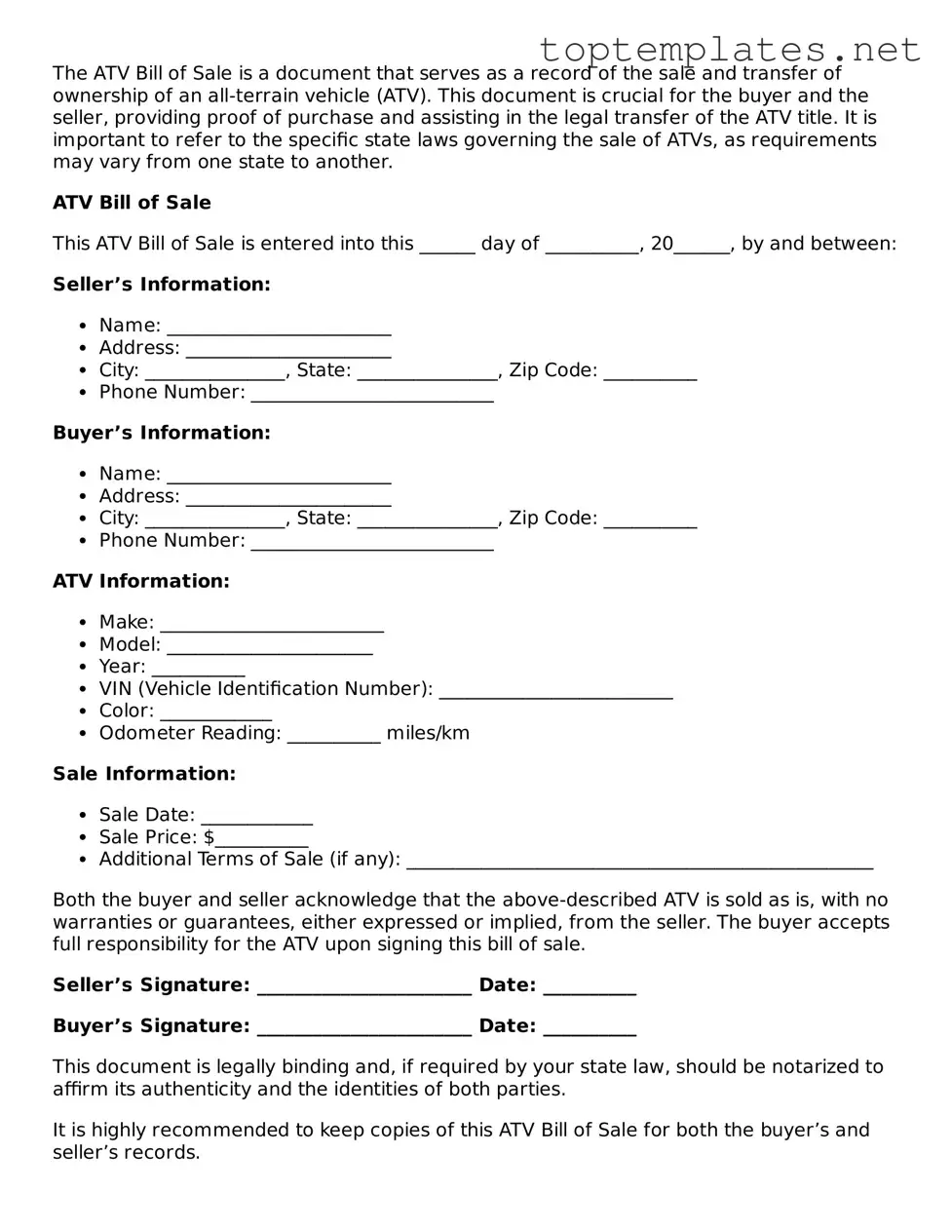What is an ATV Bill of Sale?
An ATV Bill of Sale is a legal document that records the sale and transfer of an All-Terrain Vehicle (ATV) from a seller to a buyer. It provides proof of purchase and outlines the specific details of the transaction, including the date, sale price, and identification details of the ATV.
Why is an ATV Bill of Sale important?
This document is important because it serves as a legal record of the transaction, helping to protect both the buyer and the seller. It can be used to prove ownership, resolve disputes, and is often required for registration and insurance purposes.
What information should be included in an ATV Bill of Sale?
The form should include the names and addresses of both the buyer and seller, the sale date, the sale price, a detailed description of the ATV including make, model, year, and Vehicle Identification Number (VIN), and signatures from both parties.
Is notarization required for an ATV Bill of Sale?
While not always required, having the document notarized can add an extra layer of legal protection and authenticity. It is advisable to check the specific requirements in your state or consult a legal expert.
Can an ATV Bill of Sale be used for any type of ATV?
Yes, an ATV Bill of Sale can be used for the sale and purchase of any type of All-Terrain Vehicle, including but not limited to quads, three-wheelers, and side-by-sides.
Do I need an ATV Bill of Sale if I am gifting an ATV?
Yes, it is recommended to complete an ATV Bill of Sale even if the ATV is being gifted and no money is exchanged. This document can serve as proof of the transaction and transfer of ownership.
What happens after the ATV Bill of Sale is signed?
Once signed, the buyer should keep the original document as proof of ownership. The buyer may need to present this document for registration, insurance, or during any legal queries regarding the ATV's ownership.
Where can I find a template for an ATV Bill of Sale?
Templates for an ATV Bill of Sale can be found online through legal resources websites, state government websites, or by consulting with a legal expert who may provide or recommend a suitable template.
